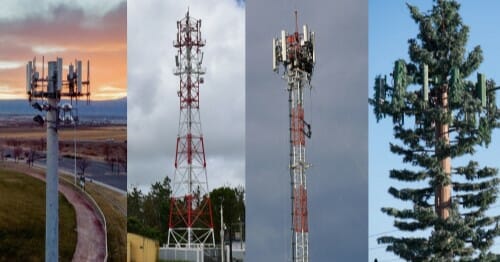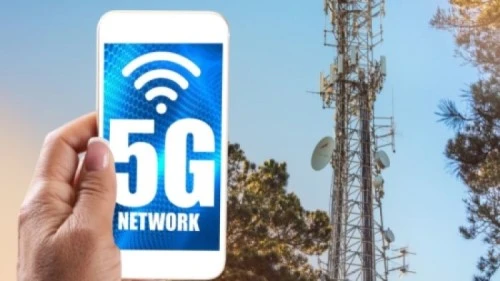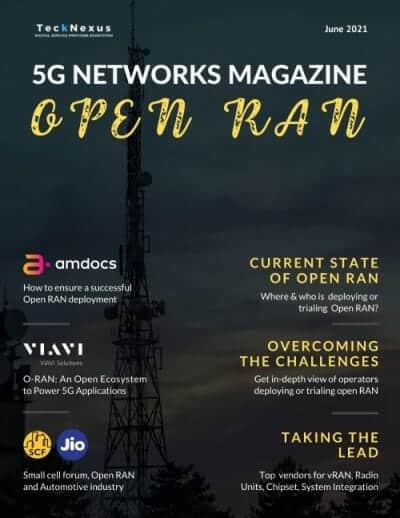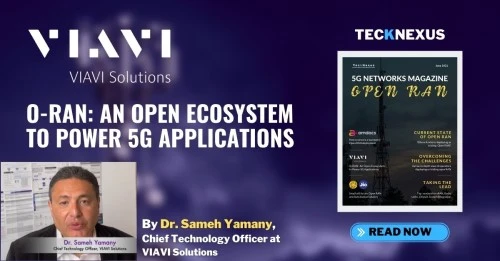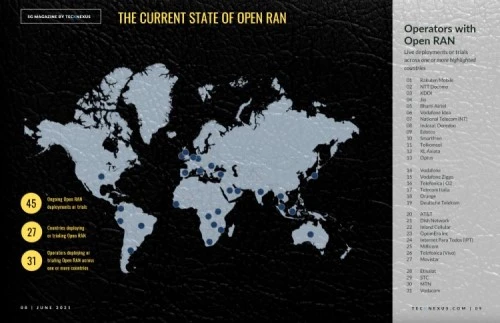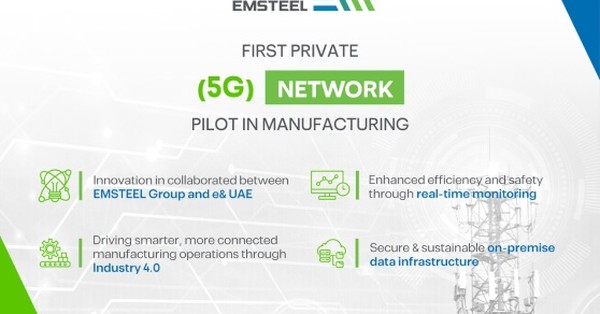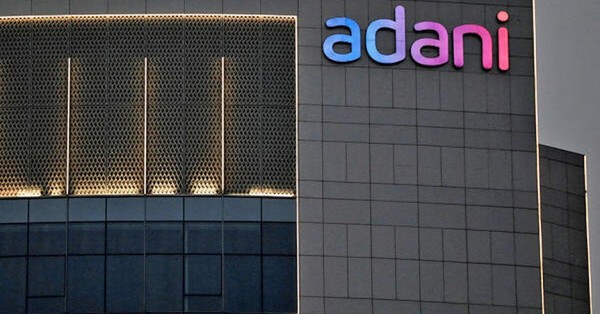Explore Private Networks characterstics, benefits, ecosystem players and the top industry verticals leveraging private networks. ...
Home » 5G Magazine » 5G Magazine – Open RAN Edition » Current State of Open RAN in Europe
Current State of Open RAN in Europe
The current state of Open RAN - which countries and operators in Europe have deployed/trialed Open RAN?
Log In or Register to Access This Article
Login
Register
Feature Your Brand in Upcoming Magazines
Showcase your expertise through a sponsored article or executive interview in TeckNexus magazines, reaching enterprise and industry decision-makers.
Related Magazine Content
Discover the role of 5G in autonomous driving, covering technology, global trends, innovations, and regulatory insights. ...
Explore the impact of 5G in healthcare. Discover how 5G technology enhances patient care, increases efficiency, and drives innovation in healthcare. ...
Explore telco industry's journey towards sustainability, focusing on green networks and responsible corporate strategies. ...
Explore how 5G is revolutionizing sports with smart stadiums, improved fan experiences, operational efficiencies, and innovative marketing strategies. ...
Explore how 5G is transforming education and creating smart campuses, enhancing learning experiences and operations. ...
Explore the transformative impact of 5G on public safety, including enhanced communication, innovative uses, and future prospects. ...
Explore the transformative role of 5G in manufacturing, from integration challenges to future trends, and how it's reshaping industry operations. ...
Uncover the essentials of private 5G network security. Learn best practices for robust protection and understand key security comparisons. ...
Non-Terrestrial Networks (NTN), including satellite and related platforms, amplify the reach of 5G IoT, providing connectivity in remote or disaster-hit areas. With potential applications ranging from remote industrial monitoring to precision farming, the combination of 5G and IoT is ushering in a new era of digital transformation. Yet, challenges like ...
The age of connectivity we live in is marked by an explosion in smart devices and data consumption, underpinned by rapid urbanization and technological innovations. This necessitates superior communication infrastructure, especially with the rise of 4K/8K video streaming, online gaming, VR/AR, and shifts in work culture prompted by COVID-19. Despite ...
Satellite constellations are advanced networks of strategically placed satellites designed to offer extensive global coverage, overcoming the limitations of single satellite systems. They're pivotal in global communications, particularly in the era of 5G, enabling high-speed, low-latency connections. Different constellations operate at varying altitudes - Geostationary Earth Orbit (GEO), Medium Earth ...
The emergence of 5G Non-Terrestrial Networks (NTN) presents a revolutionary step in global digital connectivity, but it brings with it intricate regulatory and policy challenges. These directives play a pivotal role, influencing the design, services, and the very integrity of these networks. Key issues range from spectrum allocation and licensing ...
5G Non-Terrestrial Networks (NTN) promise a new horizon in global communication with high-speed, low-latency features. Yet, as they usher in this new era, they also introduce significant security and privacy challenges. Key vulnerabilities, such as signal jamming, spoofing, and eavesdropping, pose risks to data integrity and user privacy. Addressing these ...
What are 5G Cell Towers? What is 5G Cell Site? What are the different types of 5G Towers? What are the different components of 5G Cell Towers? ...
What is the difference between Macrocells and Small cells? What are Femto cells, Pico cells, and Micro cells? What is Distributed Antenna System (DAS) & how it works? ...
What is 5G Tower Backhaul infrastructure? What is the role of fiber in backhaul infra? SWOT analysis of Fixed vs. Wireless Backhaul. ...
How to select and upgrade to 5G Towers? What are the criteria for cell coverage? What are the major challenges for deploying/upgrading a cell site? ...
Get an in-depth view of the current state of global Open RAN deployments - How to successfully deploy Open RAN? Where and who has deployed or trialing Open RAN? Who are the ecosystem partners? What are the benefits? What are the challenges? Who are the top ecosystem vendors for vRAN, ...
How to ensure a successful deployment of Open RAN - what are the stages of deployment evolution? What are the key imperatives for operators? How to leverage the Open Network Ecosystem?
Plus: An Interview with Karpura to understand what is the involvement of Amdocs with O-RAN Alliance and TIP ...
Plus: An Interview with Karpura to understand what is the involvement of Amdocs with O-RAN Alliance and TIP ...
Provides in-depth information on O-RAN Overview & Evolution, O-RAN Alliance & Architecture, O-RAN Benefits, Challenges of Deploying and Managing O-RAN based networks, and O-RAN Key Test Areas for Vendors & Operators. ...
An in-depth Conversation with Ravi Sinha on SCF and Automotive Industry Use Case - Software-Defined Car-Ecosystem with Small Cell Cloud, CV2X - The Airwave (Spectrum), SCN Service Slice - CV2X (Opportunities), Automotive World - CV2X NW status, SCF Cloud-Native Framework for 5G Network Functions and Services. ...
A Conversation with Ravi Sinha to get an in-depth perspective on Open RAN from the Small Cell Forum (SCF) perspective. Which O-RAN interfaces SCF is working on? Which use cases SCF is focussing on? ...
The current state of Open RAN - which countries have deployed/trialed Open RAN? Which operators are deploying/trialing Open RAN deployment? ...

Brand Connect
Amplify Your Brand & Boost Your Business
- Thought-Leadership Management
- Magazine Article
- Executive Interviews
- Whitepapers
- Research Reports
- Custom Research
- Blog Series
- Webinars
- Podcasts
- Advertorials
- Display Ads
- Event Partnership

















